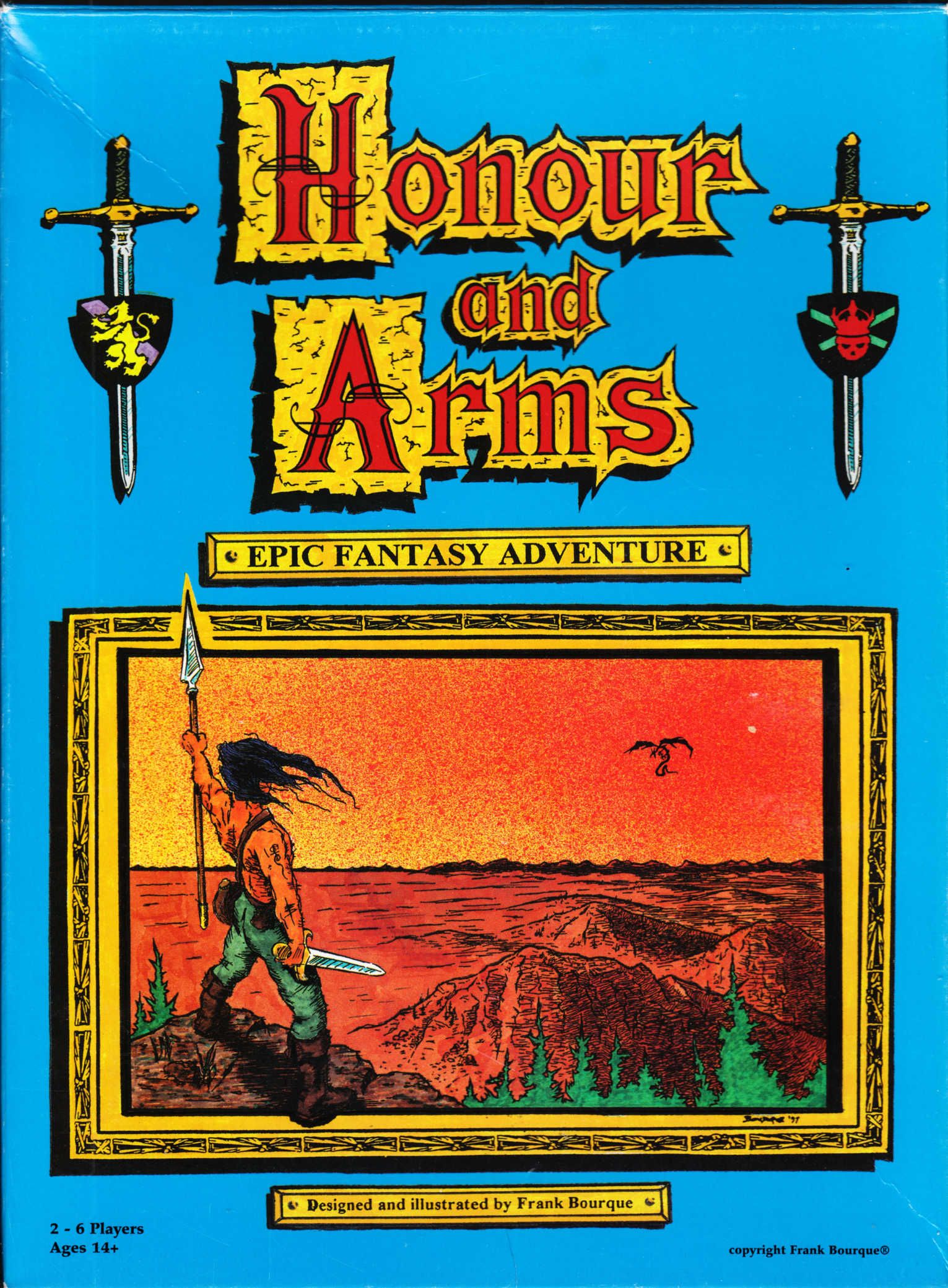
Honour and Arms (1998)
2 - 6 persone
180 - 300 min
0+
Descrizione: Honour and Arms is a fantasy adventure game played on a map of a small unnamed region. Each player controls a character; there are 16 characters supplied, differentiated by their values in six different traits, their special abilities, and their alignments.
On a turn a player rolls a die for their number of movement points and then moves from space to space on the map. In each new space a die is rolled to determine how many (if any) encounter cards need to be drawn. Encounters may be items which can be taken or may be beings which can be fought or bargained with, or in some cases taken on as minions. Fighting provide experience, either physical or psychic, and when a character has three experience of a type they must turn them in for increases in traits.
There are a number of fixed locations on the board with special rules in a separate adventure booklet, and in some cases special decks of encounter cards. There are also minor locations which have cards in the standard decks and are placed on the board once found.
There are rules for encumbrance, player vs. player combat, healing, etc. Players may band together as a group. Some activities are regulated by alignment, of which there are two kinds: good vs. evil and imperial vs. rebel. For example, good characters can't attack without provocation.
There are several ways to win the game, all dependent on alignment. For example, a good character can achieve a spiritual victory by entering the Nether Realm and defeating the Prince of Darkness, while a rebel character can achieve a political victory by finding the king in his keep and defeating him. Some ways require finding the five rings forming the Hand of Fate, but if a character wears all of them at once they may become bewitched by them, in which case they get special powers but then can only win by killing all the other characters. The rules suggest that for a shorter game a time limit is set and then if no one has achieved a victory condition, a scoring rubric is provided.
On a turn a player rolls a die for their number of movement points and then moves from space to space on the map. In each new space a die is rolled to determine how many (if any) encounter cards need to be drawn. Encounters may be items which can be taken or may be beings which can be fought or bargained with, or in some cases taken on as minions. Fighting provide experience, either physical or psychic, and when a character has three experience of a type they must turn them in for increases in traits.
There are a number of fixed locations on the board with special rules in a separate adventure booklet, and in some cases special decks of encounter cards. There are also minor locations which have cards in the standard decks and are placed on the board once found.
There are rules for encumbrance, player vs. player combat, healing, etc. Players may band together as a group. Some activities are regulated by alignment, of which there are two kinds: good vs. evil and imperial vs. rebel. For example, good characters can't attack without provocation.
There are several ways to win the game, all dependent on alignment. For example, a good character can achieve a spiritual victory by entering the Nether Realm and defeating the Prince of Darkness, while a rebel character can achieve a political victory by finding the king in his keep and defeating him. Some ways require finding the five rings forming the Hand of Fate, but if a character wears all of them at once they may become bewitched by them, in which case they get special powers but then can only win by killing all the other characters. The rules suggest that for a shorter game a time limit is set and then if no one has achieved a victory condition, a scoring rubric is provided.
